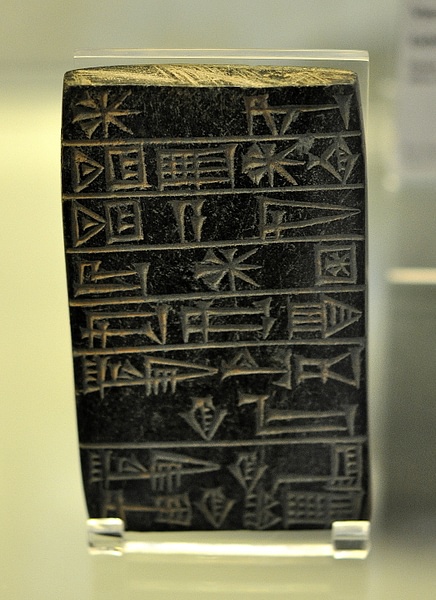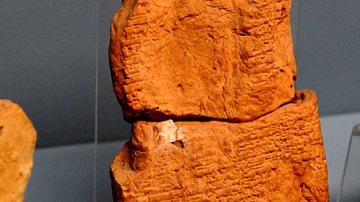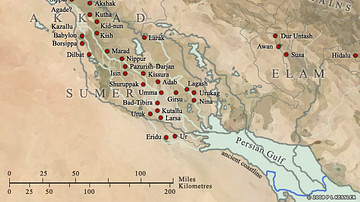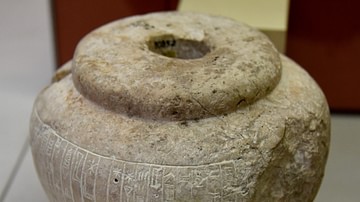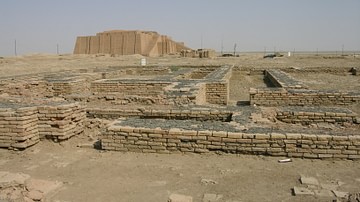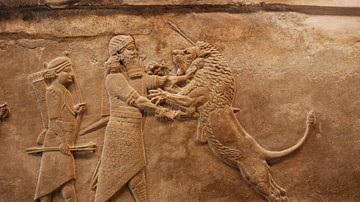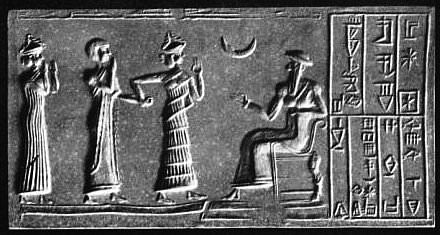
Ur-Nammu (r. 2047-2030 BCE) was the founder of the Third Dynasty of Ur in Sumer who initiated the so-called Ur III Period (2047-1750 BCE) also known as the Sumerian Renaissance. He is best known as the king who composed the oldest extant law code in the world, the Code of Ur-Nammu.
An earlier law code (known as the Code of Urukagina from the 24th century BCE) is only known through partial references to it and so, since the actual text itself has not been found, Ur-Nammu's code is considered the oldest extant. Ur-Nammu is also credited as the builder of the Great Ziggurat of Ur (or, at least, is acknowledged as the king who commissioned it) which still rises above the ruins of the city in the modern day. He presented himself as a father-figure to his people and his concern for their well-being is reflected in his law code as well as through his patronage of the arts, encouragement of cultural development, and cultivation of gardens, parks, and improvements to the infrastructure.
Although he is frequently credited with overthrowing the rule of the Gutians (who had conquered Akkad and assumed control of Sumer and the rest of Mesopotamia), he actually followed the lead of the king of Uruk, one Utu-Hegal (his father-in-law), and only took a commanding role once Utu-Hegal was killed. Although he did continue the war against the Gutians, he did not conquer them and, in fact, was killed in battle in 2030 BCE.
The liberation of Sumer from Gutian rule was accomplished by his son and successor, Shulgi of Ur (r. 2029-1982 BCE); some scholars claim Shulgi also wrote the famous code of laws or, at least, fully implemented them. Even so, Ur-Nammu continues to be remembered for the code that bears his name as well as for his wise and benevolent reign and the monumental architecture of the Great Ziggurat of Ur he commissioned.
Early History
The Gutians invaded Mesopotamia in c. 2083 BCE and toppled the weakening Akkadian Empire, which had ruled the region since the rise of Sargon of Akkad (r. 2334-2279 BCE). Unlike the Akkadians, the Gutians did not recognize the gods of Sumer or the other regions and, according to later accounts of the period, were uninterested in taking care of the land they had conquered.
Scholar Paul Kriwaczek cites ancient Sumerian inscriptions which report that, under the Gutians: "grass grew high on the highways of the land” and that the Gutians were “unhappy people unaware of how to revere the gods, ignorant of the right religious practices” (135).
They were powerful warriors, however, who kept the city states throughout Mesopotamia under their control until Utu-Hegal of Uruk found the situation intolerable enough to do something about it. According to the ancient text, The Victory of Utu-Hegal, he requested, and was granted, the blessing of the gods to drive the Gutians from the land, gathered an army, and rose against them.
He adhered strictly to the mandate he felt the gods had given him – to drive out the invaders – and so refused to negotiate with the Gutians in any form. When the opposing forces met to parley before battle, Utu-Hegal simply had the Gutian king's emissaries arrested and then attacked and routed the Gutian forces. He continued to use this same tactic repeatedly until he had won several significant victories and weakened the Gutian hold over Sumer.
What happened to Utu-Hegal following these victories is unclear, and it is equally unclear what part Ur-Nammu played in defeating the Gutians. The ancient chronicle states that, “Utu-Hegal, the fisherman, carried out criminal acts against Marduk's city, so the river carried off his corpse” which intimates that Utu-Hegal in some way dishonored the city of Babylon and so was removed by the gods who decided to drown him. The word 'fisherman' in the line refers to the legend that Utu-Hegal's dispute with the Gutians arose over fish, which could mean fishing rights or, more probably, water rights, in this case.
The line also references the legend which claims Utu-Hegal drowned while supervising the construction of a dam. At this point, according to the same chronicle, “Uruk was defeated and the kingship was taken to Ur.” Kriwaczek comments on this, writing:
It seems that the governor of Ur, Ur-Nammu, who had been appointed by Uruk's king, took the opportunity of the unexpected power vacuum to fight, defeat, and annex Uruk. The details of exactly how this came about are, unfortunately, lost to us. (138)
Although the exact details may be lost, fragments from the ancient documents known as the Mesopotamian Chronicles (also known as the Babylonian Chronicles) do fill in the story at least roughly. What seems clear is that Ur-Nammu was the son-in-law and ally of Utu-Hegal, and that the Uruk king had appointed him to rule Ur, most likely after the defeat of the Gutians and probably as a reward for service as general or, simply, because he was his son-in-law.
After Utu-Hegal drowned, Ur-Nammu saw an opportunity to advance himself and took it. The line in the chronicle stating, “Uruk was defeated” may refer to a military conquest but could as easily mean that it lost its position of leadership and that honor passed to Ur and its governor Ur-Nammu.
Reign of Ur-Nammu
The kings of the Akkadian Empire had by this time, after over 100 years of Gutian occupation, passed into legend. Stories of the exploits of Sargon the Great and his equally famous grandson Naram-Sin (r. 2261-2224 BCE) were regularly recited in performance and, it seems, even at family gatherings for entertainment. Further, both were featured characters in the popular genre now known as Mesopotamian Naru Literature which recounted the adventures and exploits of the great kings of the past in semi or completely fictional forms.
Recognizing the value of aligning himself with these earlier rulers, Ur-Nammu purposefully presented himself as the inheritor of the glory of Akkad as part of the Akkadian lineage. He instituted a Patrimonial State in which his subjects were encouraged to see him as a father-figure who cared for his children and wanted only the best for them. To this end, he created his code of laws sometime around 2050-2047 BCE (short chronology, middle chronology dates it to c. 2100-2050 BCE). Regarding Ur-Nammu's governing policies, Kriwaczek writes:
For a patrimonial state to be stable over time, it is best ruled with consent, at least with consent from the largest minority, if not from the majority. Instinctive obedience must be the norm, otherwise too much effort needs to be put into suppressing disaffection for the regime's wider aims to be achievable. (149)
This consent was almost guaranteed to be given by the people of Ur once Ur-Nammu began to present himself as the successor of the Akkadian heroes and liberator of the people.
He continued (or may have continued) the effort to expel the remaining Gutians from Sumer and took control of other Sumerian cities such as Lagash on the Persian Gulf and the sacred city of Eridu. Besides his military campaigns, he undertook building projects throughout Sumer and planted orchards and gardens in and around the cities, invigorated the economy of Sumer, and encouraged the pursuit of art and culture. The period is known as the Sumerian Renaissance for precisely these efforts. Ur-Nammu (and, following him, Shulgi) returned Sumer to its former glory by providing the economic and social stability which allowed the culture to flourish.
His popularity among his subjects is apparent in stele and inscriptions. Scholar Gwendolyn Leick writes:
[Ur-Nammu] did much to enhance the economic and military security of the country. For such efforts he was lauded in a Sumerian hymn that also extols his dedication to the god Enlil of Nippur. Ur Nammu was also the subject of other literary works, such as a text in which he visits the Netherworld. (181)
The text Leick cites regarding the netherworld - The Death of Ur-Nammu and His Descent to the Underworld (also known as The Death of Ur-Namma) - would make him a mythical hero for generations after his reign. The poem includes a rare scene of a great banquet held in the afterlife honoring Ur-Nammu which is notable because depictions of the Mesopotamian underworld regularly emphasize its silent gloom. Prior to his immortalization through verse, however, Ur-Nammu took it upon himself to create a lasting legacy through the construction of the Great Ziggurat of Ur and surrounding temple complex.
He commissioned and supervised the beginning of the construction of the Great Ziggurat of Ur while also rebuilding and refurbishing the ziggurats and temples at Uruk, Eridu, Nippur, and Lagash. He surrounded Ur with magnificent walls said to be “high as a shining mountain” and ordered the construction of canals and irrigation ditches throughout the region. He concentrated regularly on improving the lives of the people, the cities they lived in, and the land the cities rose from and depended upon for food, clean water, and pastures for livestock. His code of laws illustrates the concern he had for his subjects and the administration of justice and, even though he was clearly very popular, he never moved to have himself deified nor claimed for himself any special titles.
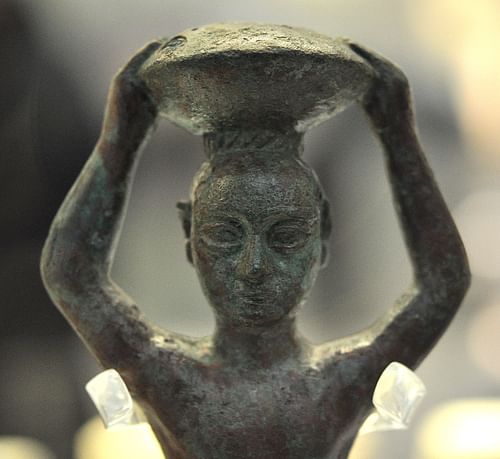
The Code of Ur-Nammu & Legacy
The Code of Ur-Nammu assumed a universal understanding on the part of the people that law descended from the gods and the king was simply the administrator of those laws. Harsh penalties were considered unnecessary for the majority of crimes as, since people were assumed to know how they should behave toward each other, a monetary fine as a reminder of how to behave was sufficient. Kriwaczek writes:
Although it is neither a true law code, being far from comprehensive; nor, some say, even introduced by Ur-Nammu but by his son Shulgi, code or no, although we only have fragments, they are enough to show that the laws covered both civil and criminal matters. Among criminal provisions it specifies which should be capital offences: murder, robbery, deflowering another man's virgin wife, and adultery when committed by a woman. For other misdemeanors the penalty was a fine in silver… [Ur-Nammu's code stands] in contrast to the more famous laws of Hammurabi, drafted some three centuries later, with its savage provisions of `an eye for an eye, a tooth for a tooth'. (148-149)
The Code is comprised of 40 paragraphs that state the crime and the punishment that would be administered by the state through the will of the gods. Some examples of the laws are:
If a man committed a kidnapping, he is to be imprisoned and pay fifteen shekels of silver.
If a man proceeded by force, and deflowered the virgin slave-woman of another man, that man must pay five shekels of silver.
If a man appeared as a witness, and was shown to be a perjurer, he must pay fifteen shekels of silver.
If a man knocked out the eye of another man, he shall weigh out half a mina of silver.
If a man knocked out a tooth of another man, he shall pay two shekels of silver.
If a man, in the course of a scuffle, smashed the limb of another man with a club, he shall pay one mina of silver.
These laws seem to have been effective, as Ur-Nammu's reign was peaceful and the region flourished in every area of civilization. In the year 2030 BCE the Gutians rose again against the cities of Sumer, and Ur-Nammu led his army to meet them. Possibly leading from the front of his forces, the king was killed in battle and, according to the famous poem previously noted, The Death of Ur-Nammu and His Descent to the Underworld, his army scattered and “his body lay tossed aside like a broken urn.” Ur-Nammu's spirit then descends to the underworld where he is given a hero's welcome.
This poem, which is a fascinating blend of history, mythology, theology, and wisdom literature, elevated Ur-Nammu to legendary status as a great king who died for his people and ensured his immortality as it was recited for generations. His son Shulgi avenged his death by decimating the Gutians and driving the survivors completely from the region of Sumer. Ur-Nammu's careful administration of the government provided Shulgi with the stability and resources to completely realize a Sumerian Renaissance and the highest elevation of Sumerian culture.
